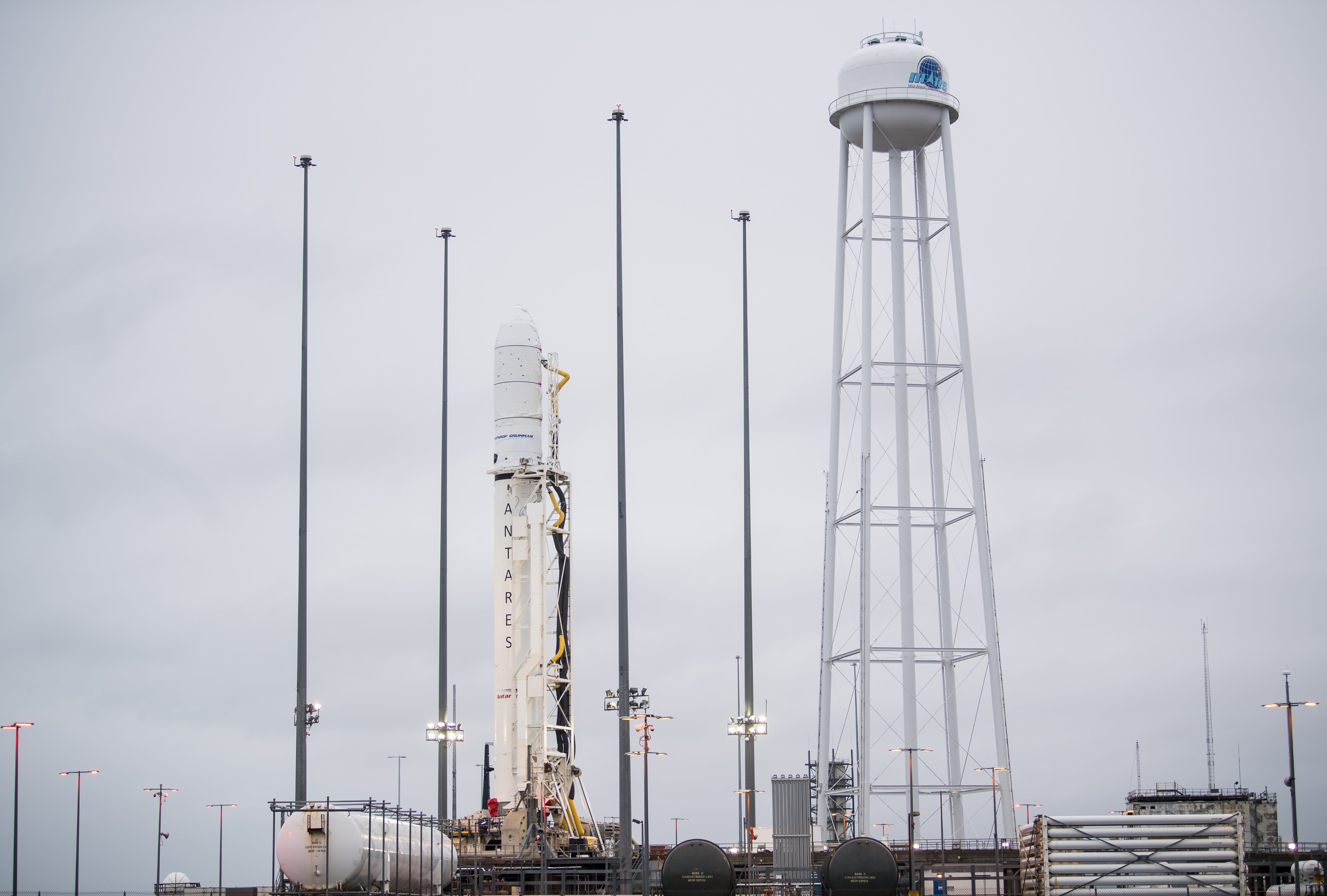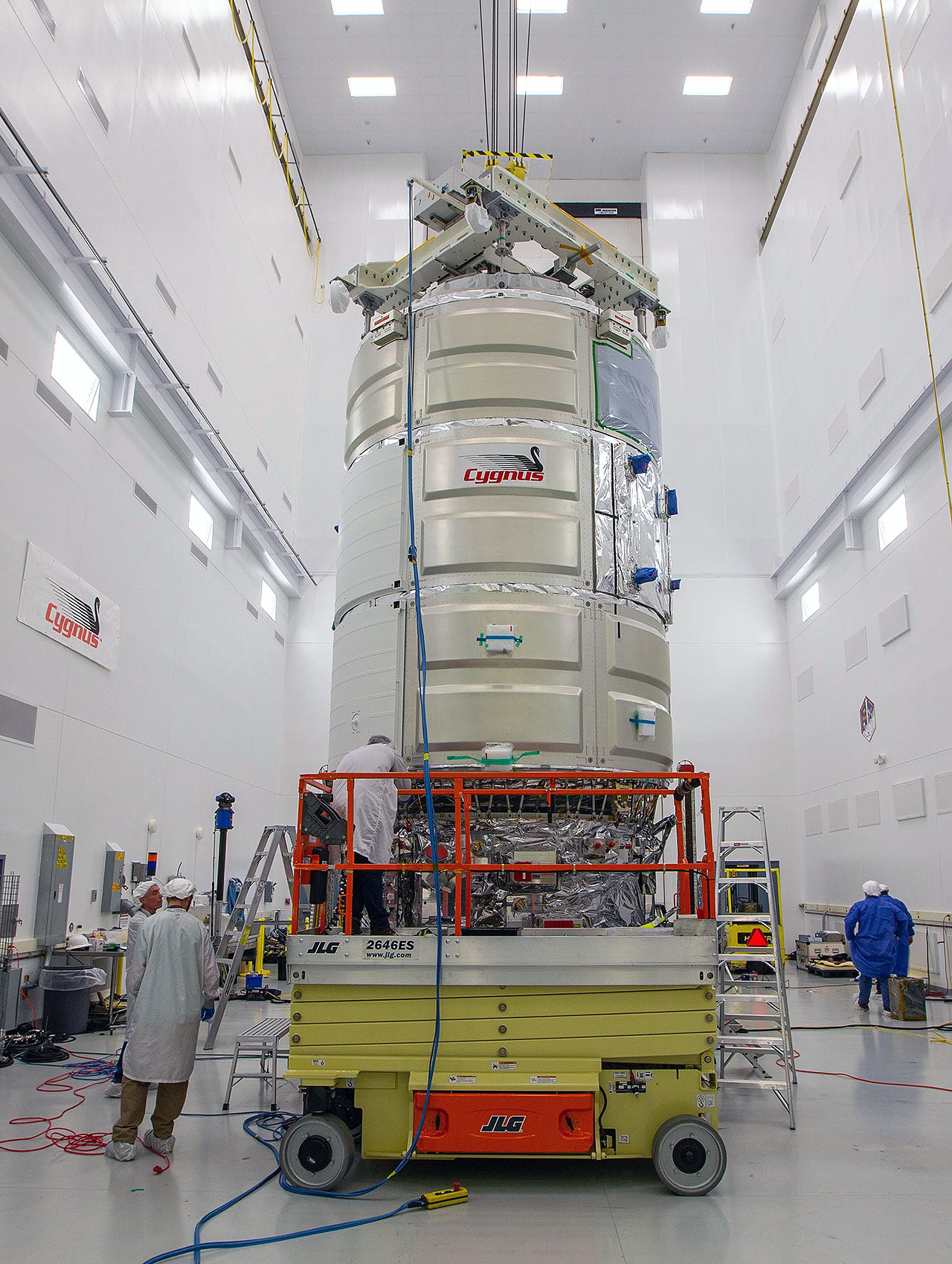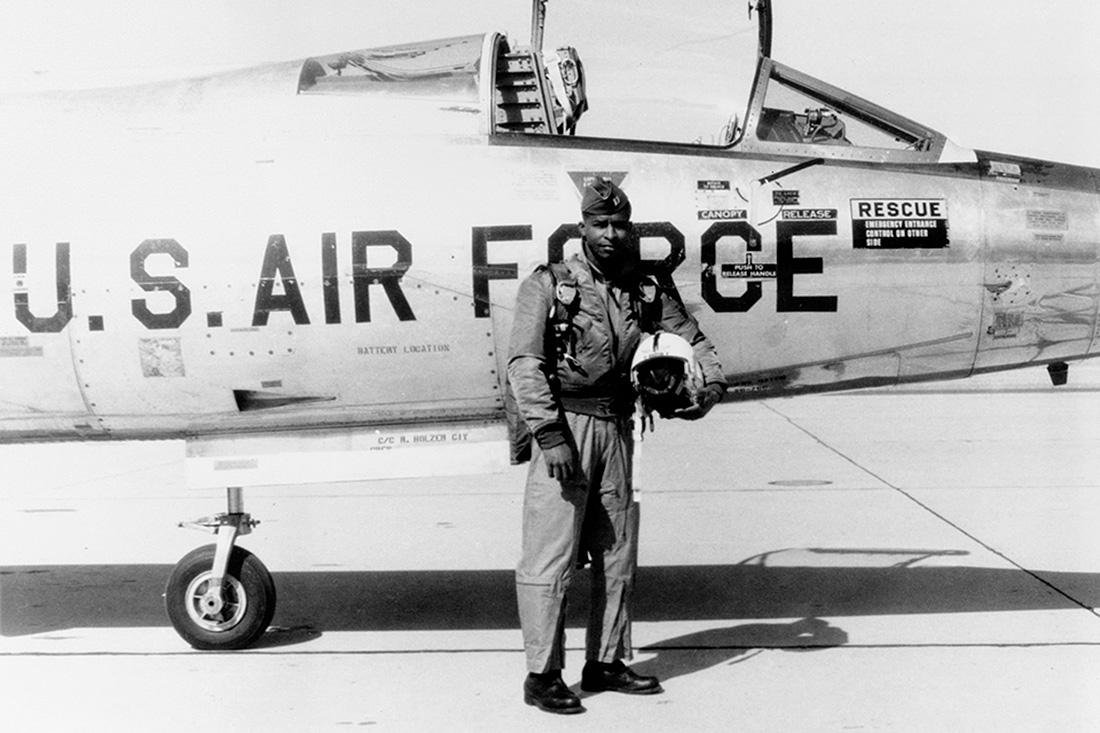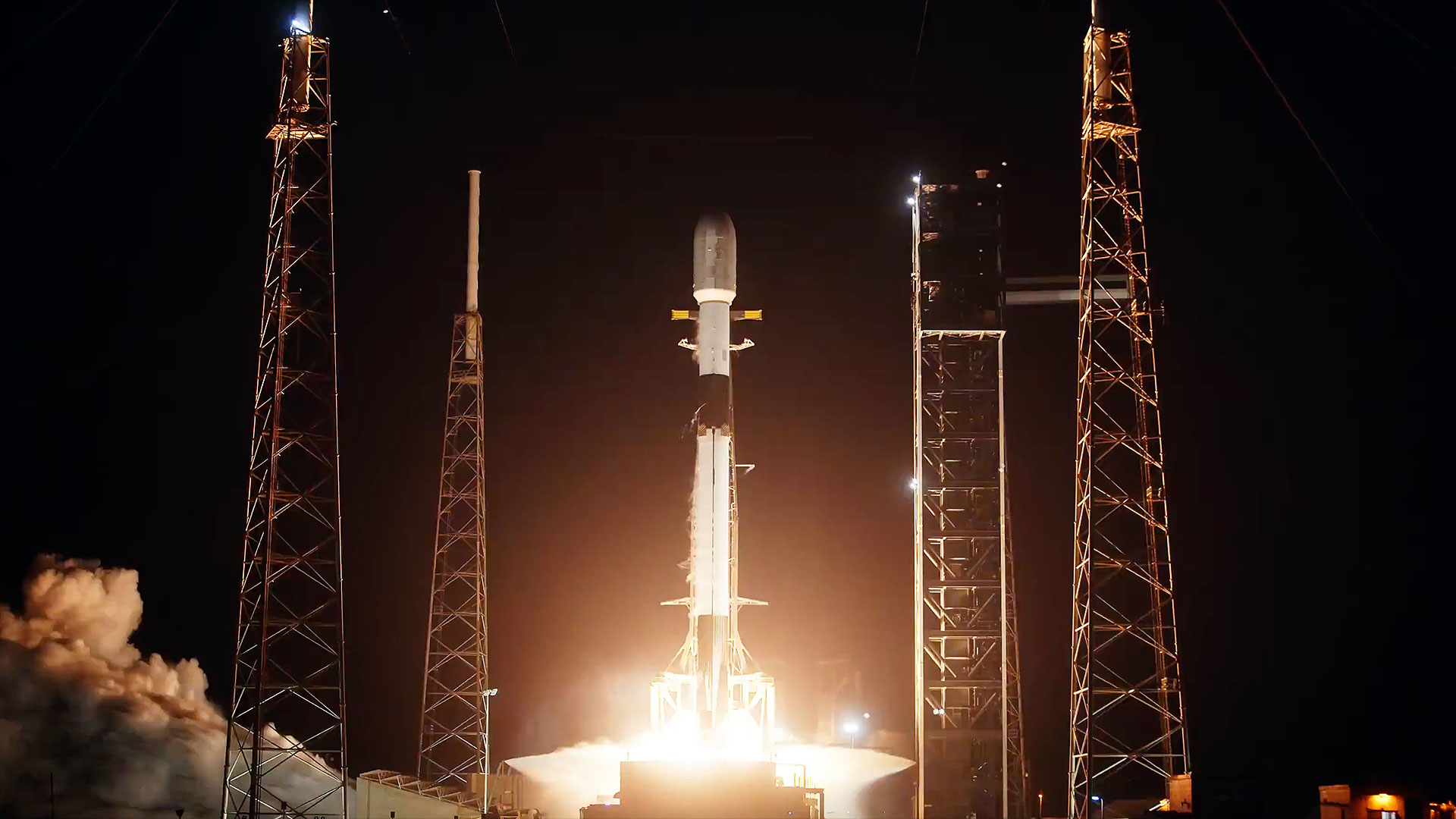Northrop Grumman 'go' to launch its 13th Cygnus cargo ship for NASA Sunday

WALLOPS ISLAND, Va. — The number 13 may have a bad wrap among the superstitious, but Northrop Grumman is taking it in stride as the company prepares to launch its 13th Cygnus cargo flight to the International Space Station on Sunday (Feb. 9).
"There's no superstitions," Frank DeMauro, Northrop Grumman vice president and general manager for Tactical Space Systems, told reporters here today. "It's just the number after 12."
The weather forecast sure seems lucky. There's a 95% chance of good weather for Sunday's launch. Liftoff for the Cygnus NG-13 mission is set for 5:39 p.m. EST (2239 GMT) on a Northrop Grumman Antares rocket from Pad 0A of the Mid-Atlantic Regional Spaceport here at NASA's Wallops Flight Facility. The weather forecast does fall to a dismal 20% chance of good weather on Monday, if Northrop Grumman has to delay the launch 24 hours, agency officials said.
You can watch the launch live here and on Space.com's homepage, courtesy of NASA TV, beginning at 5 p.m. EST (2200 GMT). The spacecraft is scheduled to arrive at the space station in the wee hours of Tuesday morning (Feb. 11).
In photos: Antares rocket launches Cygnus NG-12 cargo craft to space station
In a coincidence, Sunday is a busy day for space launches.
In addition to Northrop Grumman's Cygnus launch, NASA and the European Space Agency will launch the powerful new Solar Orbiter on a mission to study the sun's polar regions. That mission, which will launch atop a United Launch Alliance Atlas V rocket, will lift off at 11:03 p.m. EST (0403 GMT Feb. 10) from Cape Canaveral Air Force Station in Florida.
Breaking space news, the latest updates on rocket launches, skywatching events and more!
"With this launch, we do not have any conflicts," said Jeff Reddish, NASA's Wallops launch range project manager for Antares. NASA's Solar Orbiter launch webcast will begin at 10:30 p.m. EST (0330 GMT).
A packed Cygnus

Cygnus is packed with more than 7,500 lbs. (3,401 kilograms) of supplies, science experiments and other gear to the space station's three-person Expedition 62 crew, NASA officials have said.
The spacecraft is also carrying some fresh fruit, candy and -- in a first -- conditioned cheeses for space station astronauts, said NASA's Ven Feng, manager of the International Space Station Transportation Integration Office.
"I think it's hard cheddar and manchego," Feng told reporters in a prelaunch briefing today.
In addition to that hard cheese, there's some hard science riding up to the station on Cygnus NG-13. The spacecraft is carrying 2,293 lbs. (1,040 kg) of gear for 20 different science experiments to be performed by station astronauts.
That haul includes the Mobile Space Lab to grow tissues and cells in space, a bone-loss experiment to study the effects of microgravity exposure and a batch of genetically engineered E. coli bacteria that may produce a potential biofuel. There are also cowpeas aboard as part of a space food growth experiment and equipment to set a fire inside the Cygnus spacecraft (after it leaves the space station, of course) to study how fires can spread in weightlessness.
Northrop Grumman has named the Cygnus NG-13 spacecraft the S.S. Robert H. Lawrence to honor Air Force Maj. Robert Henry Lawrence, Jr., who was the first African-American ever selected to fly in space. In June 1967, Lawrence was selected to be an astronaut for the U.S. Air Force's Manned Orbiting Laboratory, a military space station, but was killed on Dec. 8, 1967 in a tragic accident when his F-104 Starfighter supersonic jet crashed. He was 32 at the time.
Related: Manned Orbiting Laboratory: Inside a US Military Space Station
More cargo for NASA
The @NorthropGrumman #Antares rocket is vertical on the @NASA_Wallops launch pad. Launch to the International Space Station is planned for 5:39 p.m. EST Sunday, Feb. 9. More 📸 https://t.co/IyVl9dA5yV pic.twitter.com/csGN26VQT5February 5, 2020
Northrop Grumman is one of two companies currently flying delivery missions to the International Space Station for NASA. (The other company is SpaceX.) NASA picked the two companies in 2008 under the agency's Commercial Resupply Services program. In 2016, NASA selected them again, along with Sierra Nevada Corp., for deliveries under the follow-up Commercial Resupply Services 2 (CRS-2) program.
The NG-13 mission is Northrop Grumman's second cargo flight for NASA under the CRS-2 program. It's also the second flight of the company's Antares 230+ rocket configuration, which can carry an additional 800 lbs. (363 kg) of mass than its predecessor, the company has said.
Sunday's launch also comes just over a week after another Cygnus spacecraft, the NG-12 cargo ship, departed the space station on Jan. 31. That spacecraft will remain in orbit for a short while, marking the second time that Northrop Grumman has had two Cygnus vehicles in orbit at the same time.
Tonight, Northrop Grumman engineers will add some final cargo to the Cygnus spacecraft as part of a "late-load" process for sensitive biological experiments and other gear. The rocket will be hoisted into position early Sunday morning.
While NG-13 is Northrop Grumman's 13th cargo mission for NASA, it's the 14th launch of a Cygnus overall. A flight in October 2014 failed just after liftoff, with the Antares rocket exploding just above its launchpad. Northrop Grumman (formerly Orbital Sciences and Orbital ATK) launched two Cygnus vehicles from Florida on United Launch Alliance Atlas V rockets before resuming Antares flights from Wallops in 2016.
Editor's note: This story has been updated to include a revised cargo weight of 7,500 lbs. (3,401 kilograms) aboard NG-13, according to NASA.
- Cygnus cargo ship leaves International Space Station, begins new mission in orbit
- Antares rocket launches Cygnus cargo ship on marathon mission for NASA
- This NASA experiment shows promise for farm-fresh foods in space
Email Tariq Malik at tmalik@space.com or follow him @tariqjmalik. Follow us @Spacedotcom, Facebook and Instagram.


Tariq is the award-winning Editor-in-Chief of Space.com and joined the team in 2001. He covers human spaceflight, as well as skywatching and entertainment. He became Space.com's Editor-in-Chief in 2019. Before joining Space.com, Tariq was a staff reporter for The Los Angeles Times covering education and city beats in La Habra, Fullerton and Huntington Beach. He's a recipient of the 2022 Harry Kolcum Award for excellence in space reporting and the 2025 Space Pioneer Award from the National Space Society. He is an Eagle Scout and Space Camp alum with journalism degrees from the USC and NYU. You can find Tariq at Space.com and as the co-host to the This Week In Space podcast on the TWiT network. To see his latest project, you can follow Tariq on Twitter @tariqjmalik.

